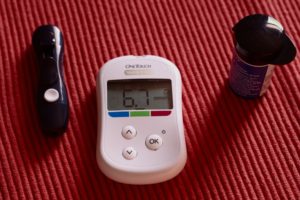
10 Worst Symptoms of PTSD
Post-traumatic stress disorder is a mental and behavioral disorder that involves significant stress responses and fear. The stress is always caused by a stressful event in a person’s past. It can generally take several weeks to months for a person to start experiencing the first symptoms of the disorder. This is because the disorder can take months to develop through a person’s processing of the trauma they experienced. The stress inducing events are generally related to childhood abuse, warfare, rape, death of a loved one, and more. The symptoms of the disorder can be highly distracting and interfere with someone’s quality of life. These are the 10 worst symptoms of PTSD and C-PTSD.
—
Typical PTSD differs from complex PTSD in the sense that it involves a short-term and one time event. C-PTSD is very similar to PTSD, as it is a type of PTSD, but it involves more long-term shame as a cause and symptom. The symptoms of the disorder are important, and generally describe it as an anxiety disorder. These are the 10 worst symptoms of PTSD in general, as both kind of PTSD are covered. While C-PTSD is generally considered worse, they are both equally bad disorders that cause significant pain and suffering. There are more than 10 symptoms across both of these disorders, but these are the worst of them.
10 Worst Symptoms of PTSD
1. Flashbacks
One of the symptoms you need to have for a diagnosis of PTSD are flashbacks to a triggering event. Since PTSD is generally caused by one event or a series of events, the sufferer will constantly be reminded. While flashbacks are not as central to something like C-PTSD, they are certainly a part of generalized PTSD. Post-traumatic stress disorder is a disorder of fear, but not everyone who experiences a traumatic event will be traumatized. This very fact can cause a great deal of shame in those dealing with it, making them feel alone and weak. The flashbacks experienced seem almost real, and they serve as a constant reminder of the event. Post-traumatic stress flashbacks have a feeling enveloped in a fear response that cause them to feel extremely vivid.
10 Worst Symptoms of PTSD
2. Panic Attacks
PTSD is a panic disorder of sorts because of it’s ability to cause a sufferer to constantly be in fight or flight. This fight or flight leads to a constant state of disarray when a person is trying to settle down. Even if they try to get a hang on it, it does not simply go away. Panic attacks can be triggered by visions of a traumatizing past event. There are often triggers just about everywhere a person looks, so it makes it hard to settle down. The panic attacks are caused by and can cause a person to feel as though they are reliving the event. Like any panic attack, a sufferer will feel as though they are losing control. Other symptoms include heart palpitations, heightened blood pressure, numbness, and tunnel vision, and more. This kind of stress, including the event, can be seen as an ego deflator.
10 Worst Symptoms of PTSD
3. Generalized Anxiety
Post-traumatic stress disorder is considered an anxiety disorder, meaning that intense terror is a longstanding part of it. People struggling with PTSD will have all sorts of negative psychological response that induce a sense of anxiety. The most significant fear is the thought of a traumatizing event happening again. The person will experience a feeling of being trapped between expectation and desire for control. The cause of PTSD is often debated, but those more likely to already experience other kinds of anxiety are more susceptible. While those struggling with this mental and behavioral disorder will have specific triggers, generalized anxiety can become a problem. Depending on the associations a person has and their triggers, a person can develop a fear of just about anything.
10 Worst Symptoms of PTSD
4. Depression
Along with experiencing a lot of anxiety, a sufferer of PTSD will experience a lot of pain from depression. C-PTSD is a more baked-in kind of anxiety, while PTSD is more about short-term but intense periods of anxiety. The depression in both of them is intense and hard, but C-PTSD is generally considered more intense. The intense fear from experiencing any kind of PTSD is considered significant and overwhelming. Thoughts of suicide and especially high with those who cannot sense any escape from the entrapment of fear. Since PTSD is often caused by a mismatch between expectation and reality, a strong sense of denial can develop. This invalidation of one’s emotions will cause the depression to become even worse over time. The more the person simply thinks, the more they become depressed.
10 Worst Symptoms of PTSD
5. Nightmares
Nightmares are a common symptoms of PTSD. The nightmares can almost be seen as flashbacks in dream form, causing a person to often wake up in fear. These dreams are extremely stressful in nature and happen almost all of the time. It can get so bad that a person may fear going to sleep in hopes of avoiding the nightmares they experience. The mind is essentially going into overdrive, causing the person to experience fear and wake up. The body is in a mode of defense, making sure that it can survive. If a person is sleeping, they are generally vulnerable, but the disorder ends up taking it too far. The nightmares can be seen as a way the body should always be ready to defend itself. The problem is that a person is not always in a situation to need it, causing the problem to begin with.
10 Worst Symptoms of PTSD
6. Severe Shame
Shame is something that affects people with both PTSD and C-PTSD, which is worsened when experiencing a flashback event. PTSD will be more centered around intense fear, while C-PTSD is more centered around significant shame. A sufferer will end up invalidating their own emotions in the process of having to accept what happened to them. The more a person thinks about themselves, the more shame they will experience. Shame comes in the form of feeling used and abused, along with feelings of worthlessness and fear. The shame can come from having the disorder or from long-term neglect and abuse. The shame of someone’s experience can become so bad that it leads to suicidal behavior. This is why it is important to help those dealing with this kind of regret and guilt.
10 Worst Symptoms of PTSD
7. Dissociation
Dissociation is a strong indicating symptom of PTSD, and it can cause a person to seem extremely spaced out. This is because the sufferer is trying to avoid thinking about the pain they have sufferer over and over again. Dissociation is seen as more of a coping mechanism than anything else, and it helps the person from feeling lost. The problem is that it stops the person from properly addressing the pain in a more suitable and inclusive way. The act of dissociating creates a rift between the person and the sufferer instead of allowing the person to deal with it. The more a person dissociates, the more the problem will be maintained rather than fixed. If a traumatizing event happened early enough in a person’s life, it can cause severe dissociation; it can lead to disorders like dissociative identity disorder.
10 Worst Symptoms of PTSD
8. Self-Harm
A significant part of experiencing PTSD is the self-harm that can follow. It can come in any number of forms, but the most prototypical forms it comes in are physical. Cutting, bruising, hitting oneself, and more, are very common among those who suffer with PTSD. Substance abuse is another common response, as those who suffer are constantly looking for an escape. There is also a lack of enjoyment during any kind of activity, leading to an evasion of food and sleep. As mentioned, problems with suicide are often prevalent, especially those with C-PTSD. This is because of the feeling that there is no escape no matter what. The cutting and burning are not always meant to be suicidal, but it can lead to infections and death. The self-harm can lead to worsened symptoms and even other disorders like anorexia.
10 Worst Symptoms of PTSD
9. Insomnia
When talking about the nightmares of PTSD, it is hard to ignore the fact that PTSD can cause a lot of sleepless nights. In fact, anxiety disorders are one of the leading causes of insomnia. This lack of sleep is caused by a fear of sleeping, causing a person to feel even more trapped. While a nap should be seen as a reprieve, it is not this way for a PTSD sufferer. Those with PTSD can also end up feeling even more insane with no sleep. Since PTSD is a disorder of vulnerability and expectation, it is no wonder that insomnia is a symptom.
—
The stress is already bad enough, but the lack of sleep makes it even worse. The forgetfulness associated with PTSD is already bad enough, but the lack of sleep only serves to strengthen it. The reason for so little sleep is because a fear of nightmares and sleep in general is developed. A sufferer will often go to any extreme to avoid feeling this way. The problem also lies in the fact that the body will often not allow someone to sleep.
10 Worst Symptoms of PTSD
10. Emotional Dysregulation
Those suffering with PTSD or C-PTSD will suffer from emotional problems, but these symptoms are often worse with C-PTSD. The cause of these emotional problems is caused by severe stress, dissociation, and anxiety. Since the symptoms are in response to long-term stress, it leads to shame. In the process, this ends up creating personality defects. Complex PTSD is similar to borderline personality disorder, but they are different. The difference lies in the fact that it is not a personality disorder involving a fear of abandonment. The emotional dysregulation is very similar, but it is often more intense, aloof, and unwarranted with BPD. People can end up with a diagnosis of both disorders, but shame is the important symptom of C-PTSD. It is not that they do not care about being left or loved, as they think they are unlovable.





Recent Comments